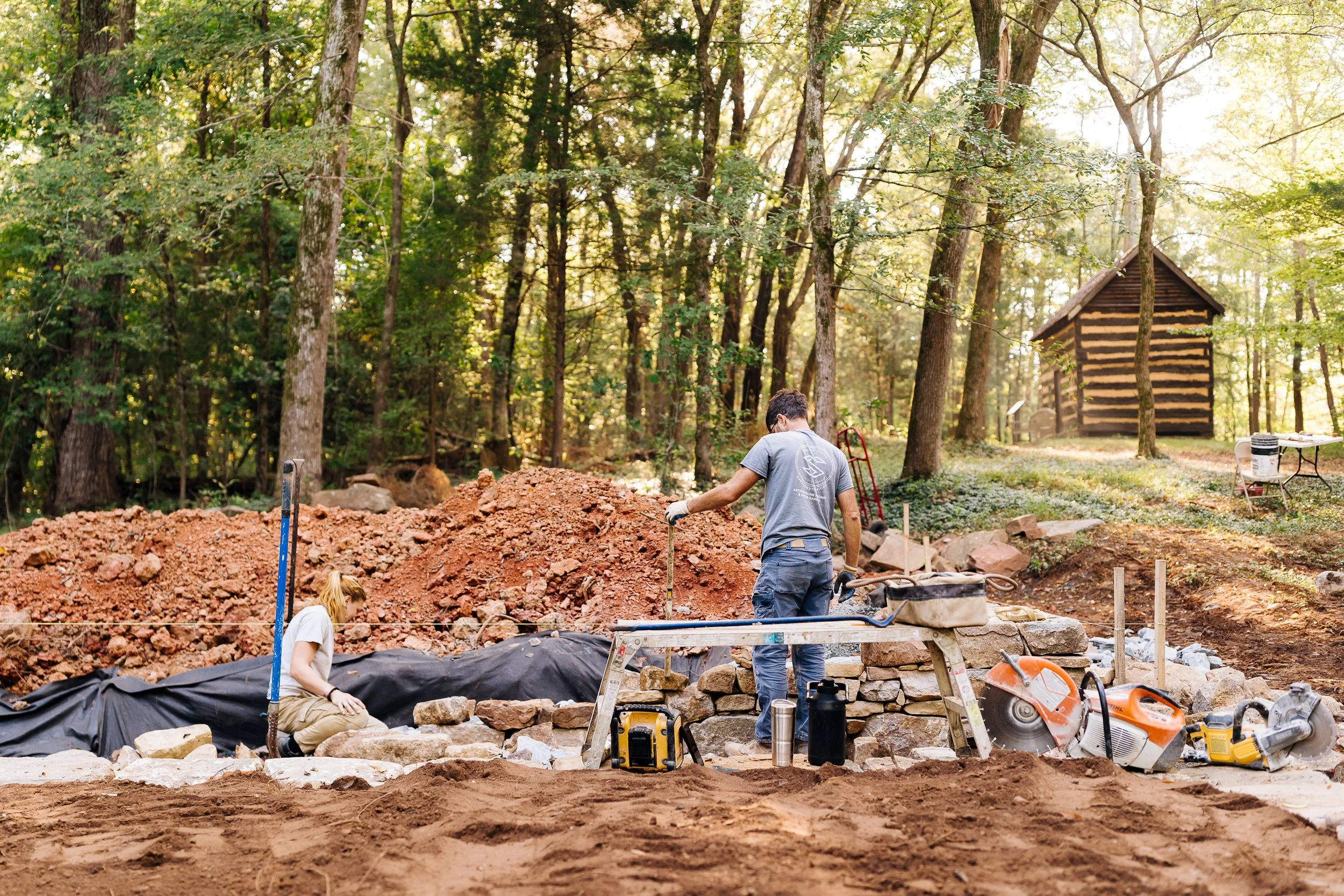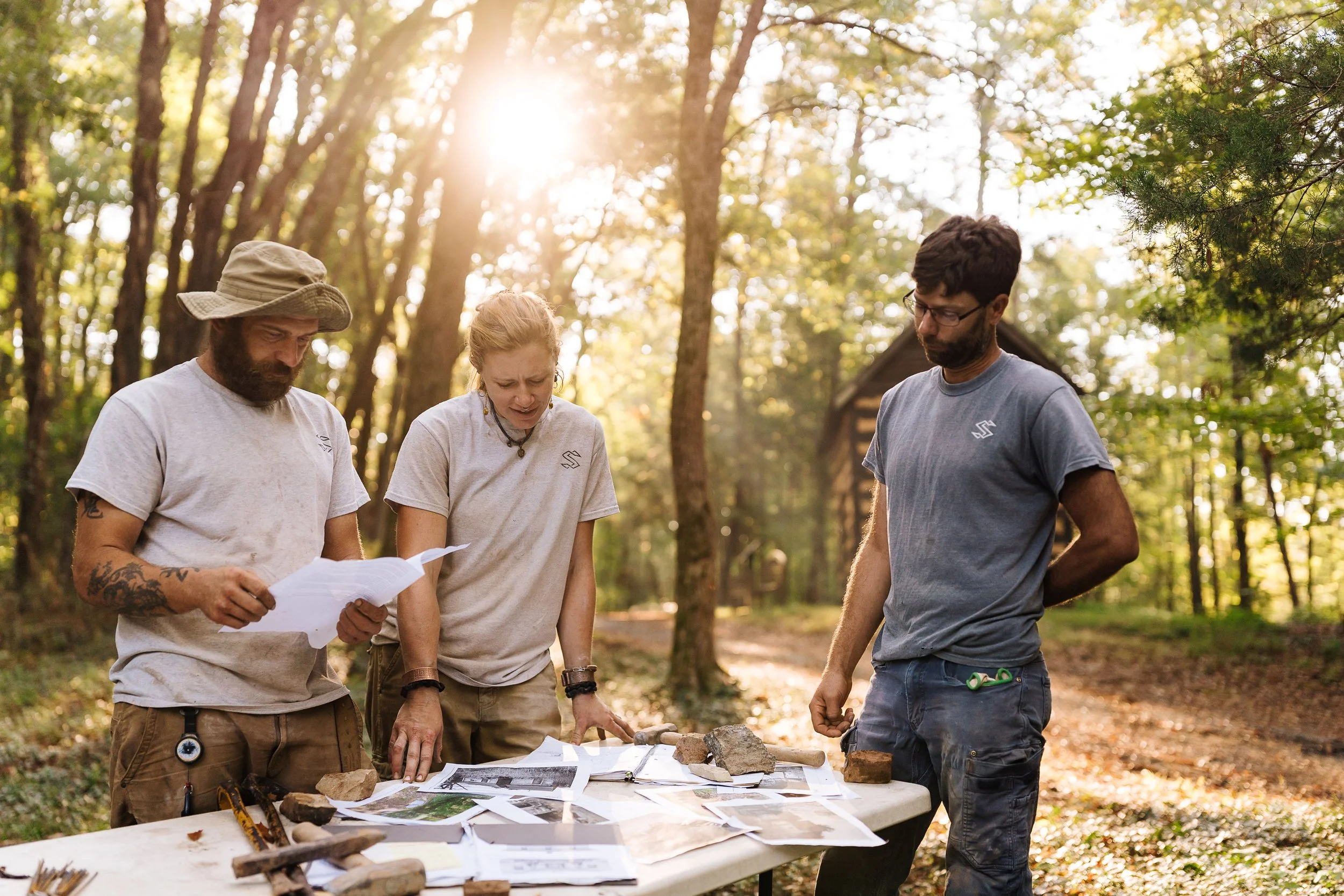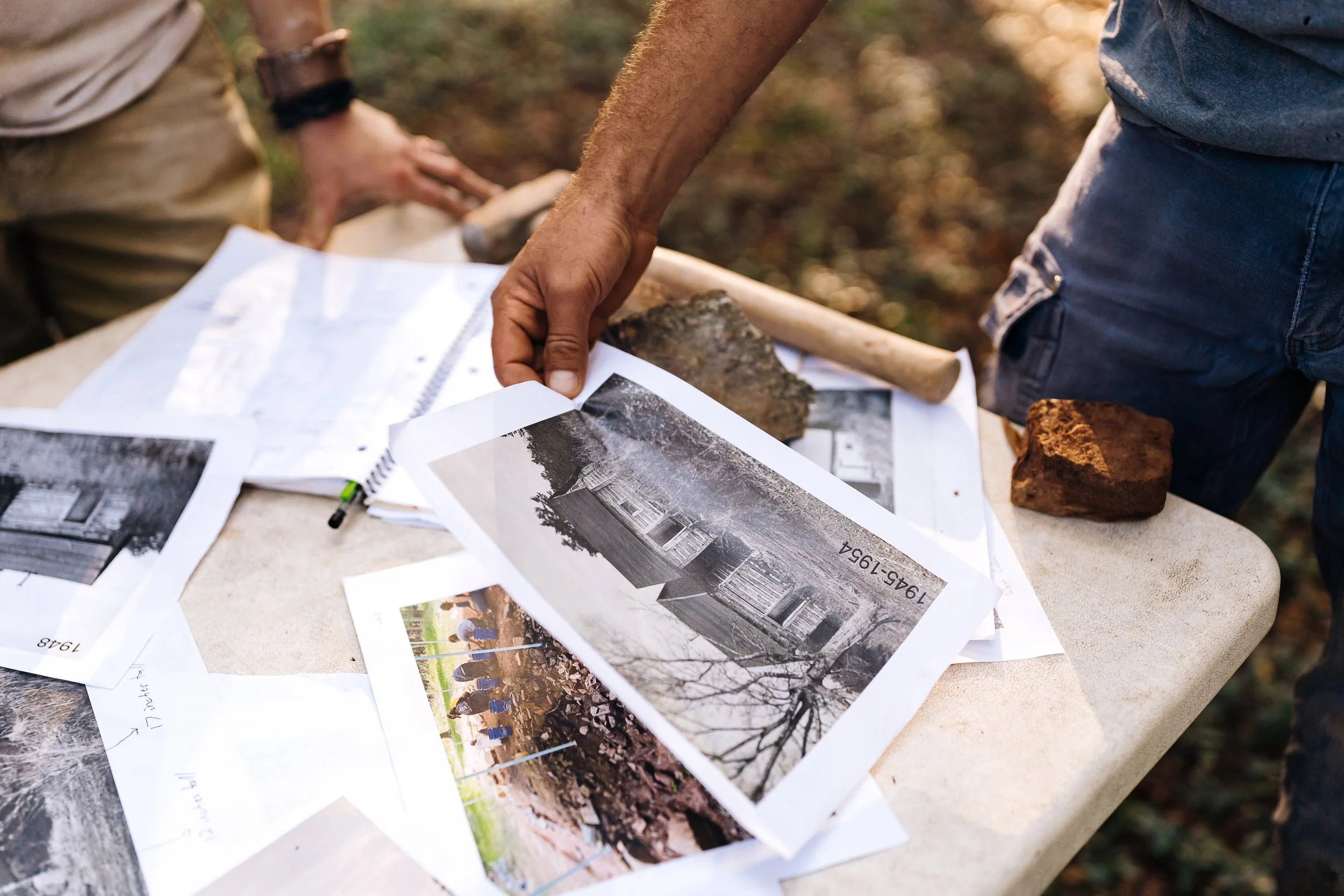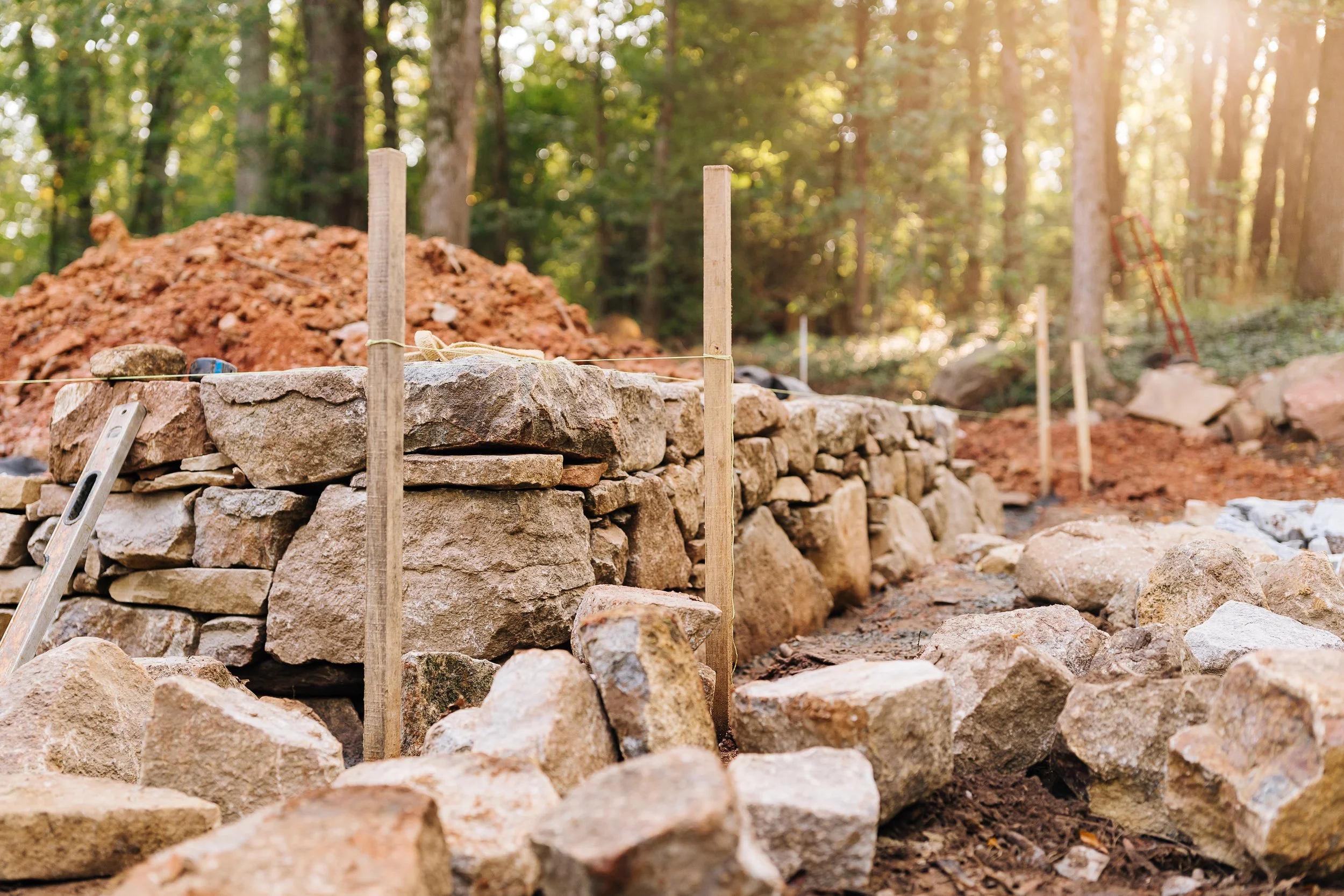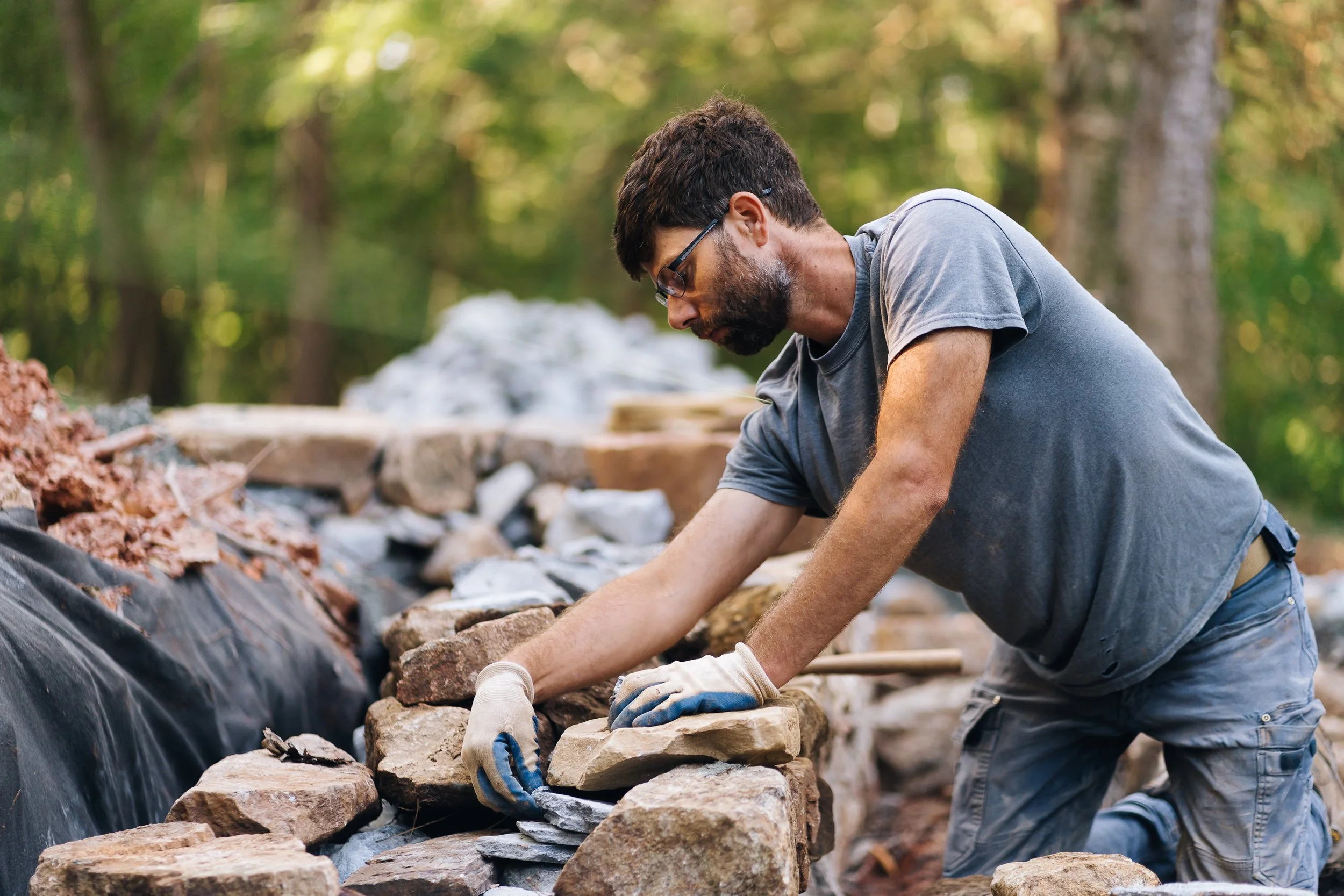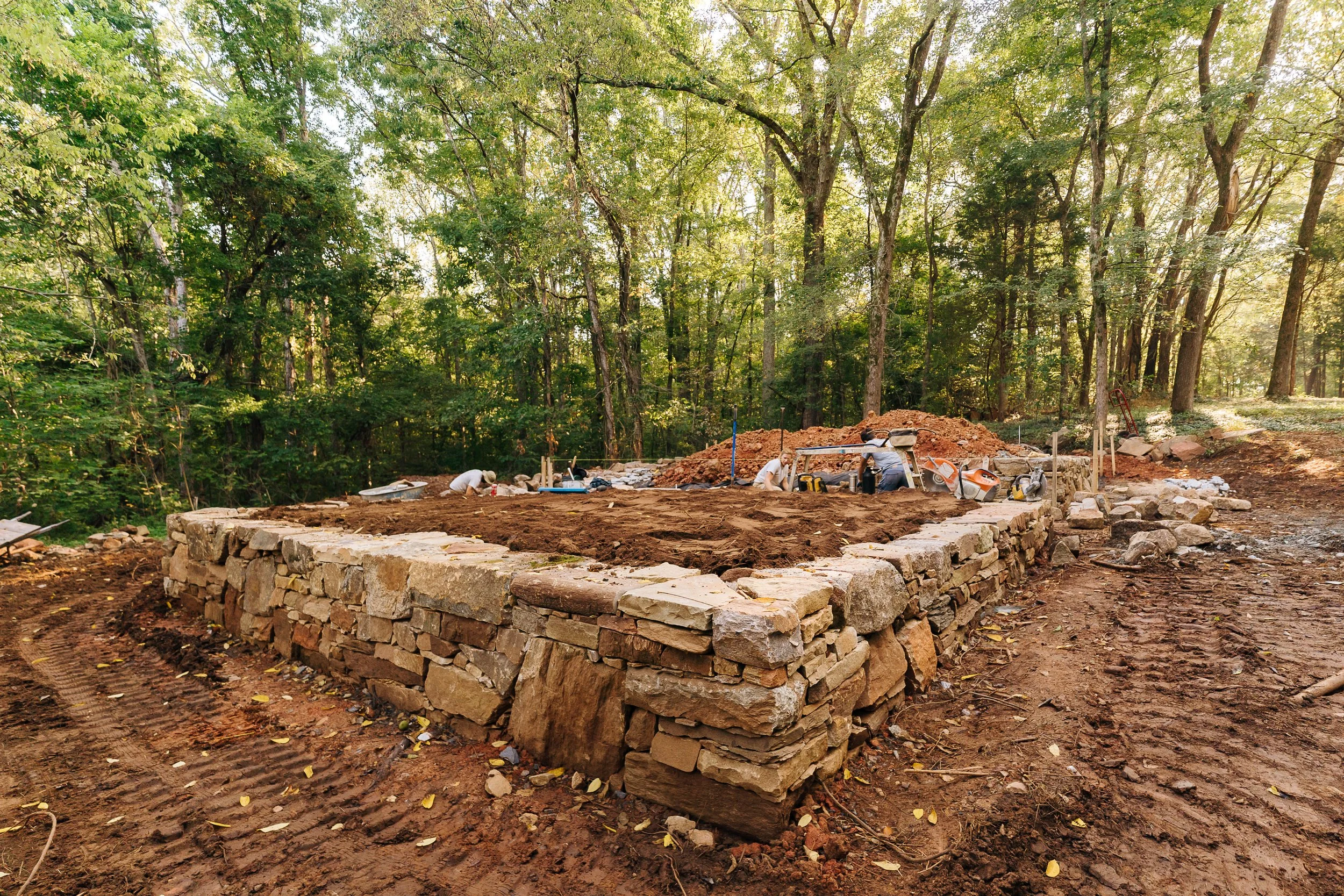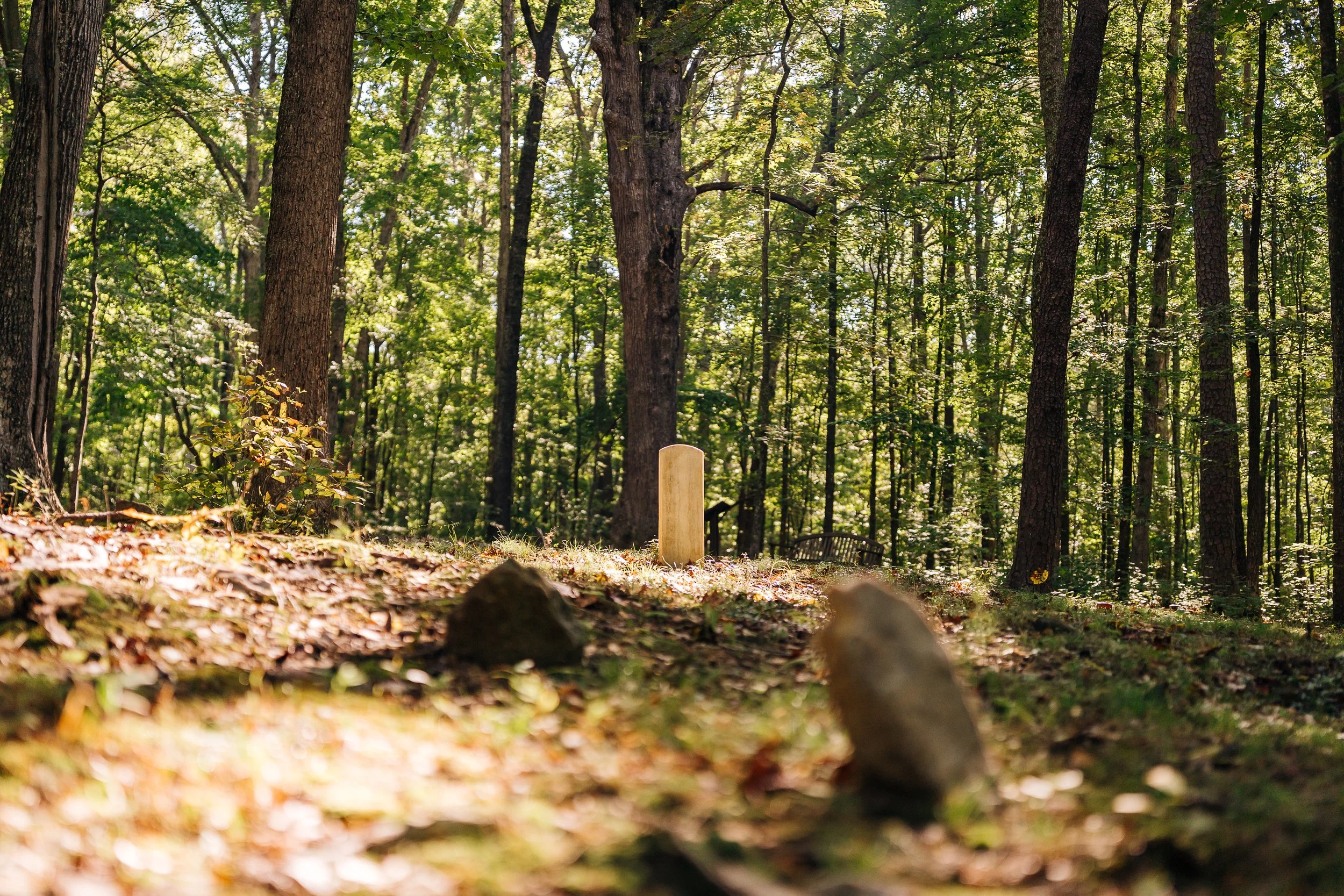PROJECT HIGHLIGHT: Our Work on Red Hill's Quarter Place Cabin Foundations
Shrader Stone at Patrick Henry’s Red Hill
Rebuilding Red Hill's Quarter Place Cabin Foundations
When we first walked the grounds of the Quarter Place at Patrick Henry's Red Hill, we learned about the estate's history and their efforts to tell the story of how enslaved people lived, worked, and contributed to the plantation.
Shrader Stone Planning the Quarter Place Cabin Foundation Rebuild
Red Hill is the final home and burial place of Patrick Henry--considered the great orator of the American Revolution. He later became Virginia's first and then fifth governor. Beyond the home of one of our Founding Fathers is the story of enslavement, labor, survival, and our shared remembrance.
The plantation that became Red Hill was built and maintained through enslaved labor. Over the course of its history, researchers have documented more than 200 individuals — both enslaved and free — connected to Red Hill.
The "Quarter Place" name appears in 19th-century deeds and maps of Red Hill, referring to the houses where enslaved Africans and later freed African American sharecroppers lived from the 18th century well into the 20th century.
In recent years, historians and archaeologists invested in the story of the enslaved who worked and lived at Red Hill, primarily through the Quarter Place Trail, the enslaved cemetery, and exhibitions such as The Price of Chains and Slavery. These efforts require not just archival research but archaeological investigation and sensitive restoration. That's where we came in.
Images of Former Quarter Place Cabins
Two side-by-side cabins existed in the Quarter Place, which burned down, and many foundation stones had been either reused or moved.
Red Hill archaeologists, assisted by Longwood University students, studied the site to discover artifacts and the outlines of the cabin. They found nails from the 19th century, jars and bottles, ceramic pieces, and special items: a watch, jewelry, shoes, and a large glass apple. From photographs of the former cabins, remaining stones, and archaeological research, outlines of two side-by-side cabins emerged, defining the locations of the walls and the hearth bases.
We followed Red Hill's rebuilding strategy: resetting foundation stones compatible with the original masonry. The goal was not to rebuild the cabin, but to reestablish the integrity of the footprint — to let the ruin speak, not to replace it.
We collected fieldstone from nearby fields and forests, and discovered former foundation stones in the process. We built the foundation as it would have been built by enslaved people — without mortar, carefully stacked. However, without hours and hours of chiseling or shaping, as enslaved people likely had limited time to build their homes.
Quarter Place Cabin Foundation Rebuilding in Process
These stone foundations supported homes, hearths, doorways, and life. Enslaved people in these cabins not only tended livestock and processed tobacco, but they also cooked and shared meals, formed relationships, sang, and cared for their children. They sustained their complexity, their social and spiritual networks amid the harshest of conditions.
Red Hill researchers are compiling the names of Quarter Place inhabitants — women, men, elders, children — with familial ties, births, deaths, and sometimes paths to freedom.
Because of Red Hill's evolving mission, the site has shifted from a single-narrative museum to a layered landscape of storytelling. Visitors can now follow the Quarter Place Trail, which weaves from the main house to the cabin sites and the enslaved cemetery beyond.
Red Hill is interpreting the cemetery of 147 individuals — one of the largest intact enslaved cemeteries in Virginia — and inviting descendant communities into the ongoing dialogue.
Inside the museum, the exhibition The Price of Chains and Slavery presents artifacts, documents, and narratives that center on the voices of formerly enslaved people. Red Hill offers educational programming for school groups, public tours, and events.
Red Hill invites visitors not to glorify a plantation but to reckon with its legacies — to understand that the land carries both the grand rhetoric of liberty and the heavy cost of enslavement.
We are honored and humbled to have played a role in this effort. We're inspired by the ongoing work of Red Hill: research, community engagement, education, and stewardship. May these quiet stones invite reflection, conversation, and deeper understanding of the entwined histories of America's promise and America's burden.
Corey Shrader Rebuilding Quarter Place Cabin Foundation
Rebuilt Quarter Place Cabin Foundations at Patrick Henry’s Red Hill Plantation
Red Hill is working to identify all 147 individuals buried at Quarter Place Cemetery.

